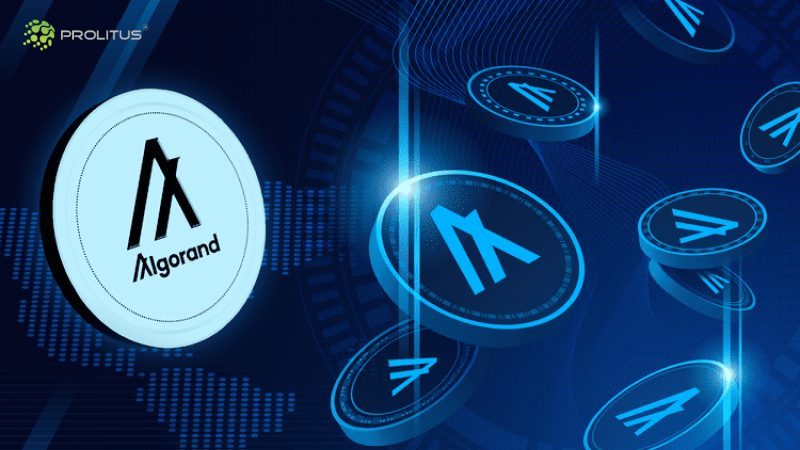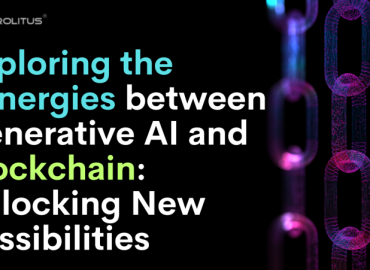Algorand is an autonomous, decentralized blockchain network built to solve the Blockchain Trilemma of achieving security, speed, and decentralization. It is an open-source blockchain network that allows anyone to build upon it. Algorand is capable of processing transactions at a faster pace and focuses on achieving near-instant finality.
Algorand is a layer-1 blockchain that offers secure, efficient, and scalable applications. It is the world’s first pure proof-of-stake (PPoS) fundamental blockchain that can process over 1,000 transactions per second (TPS). Silvio Micali is the founder of Algorand, a professor of computer science at the Massachusetts Institute of Technology.
Algorand’s blockchain boasts interoperability, performance, and scaling, along with an option of L2 smart contracts. In addition, layer-2 scaling solutions provide users with additional functionality, such as off-chain computing and payment scalability.
The Algorand blockchain doesn’t pose a problem to users for unconfirmed transactions, even if some users are malicious or the network is partitioned. In contrast, existing cryptocurrencies allow for temporary forks and require a considerable time to verify transactions with high confidence on an hour scale.
This article will discuss the Algorand blockchain, why it is unique and working, and the difference between the Ethereum and Algorand blockchains.
What is unique about the Algorand blockchain?
Bitcoin, the most popular blockchain, assumes that no bad actor has control over most of the computational power. But it also faces several challenges, including the proof-of-work approach that requires a large amount of electricity and computation power.
Also, the consensus mechanism allows for forks that extend the time to 1 hour for confirming the transaction. Additionally, money laundering financing criminals or terrorist organizations could use the anonymity provided by BTC payments.
Similar to public blockchain platforms, Algorand is a decentralized network. It aims to solve the blockchain trilemma by addressing three major issues of the ecosystem. First, the blockchain uses a Proof-of-Stake (PoS) consensus mechanism with a strong throughput capacity and various use cases.
Since the rising gas fees on Ethereum, Algorand has become the choice of developers looking to host decentralized applications (dApps). Developers have even turned to Algorand as an Ethereum alternative for dApp development and DeFi applications.
Algorand has its own Algorand Standard Asset (ASA) protocol that allows developers to create new tokens or transfer existing tokens. The blockchain also provides a valuable option for central bank digital currencies (CBDCs), as the blockchain has been chosen to host the Marshall Islands CBDC.
How does Algorand work?
Algorand comprises two types: participation nodes that provide computing power to validate transactions; and relay nodes that act as network hubs. The relay nodes help to connect and keep track of the ledger. Although anyone can run a relay node on the network, they are not allowed to mine “ALGO,” and it has a dedicated reward system.
The nodes require the Algorand Virtual Machine (AVM) to connect to the Algorand network. AVM is the software that operates on both relay and participation nodes on the Algorand network. This stack engine is responsible for evaluating smart contracts and assessing all of the logic in smart contracts before deciding on their execution.
Algorand handles smart contracts in two layers: on-chain and off-chain. On L1, the blockchain enables smart contracts to function “on-chain,” where each smart contract adds traffic to the network. But, it is essential to check for too many contracts as it can cause the network to slow down.
The Algorand blockchain also provides L2 smart contracts executed “off-chain.” They are recorded in the blockchain ledger and run outside the network.
Algorand (ALGO)
ALGO is the native cryptocurrency of the Algorand blockchain and a cornerstone of its network structure. Algorand has a unique protocol design where the rewards paid to validators are split and distributed among all ALGO coin holders. It means that ALGO coin holders are liable to earn about 7.5% APY.
Reward distribution takes place every 10 minutes and encourages users to join the Algorand staking platform and accelerate the path to decentralization.
Algorand further simplifies the process by which users don’t need to stake the coin as part of the block production. Instead, they can hold ALGO in a non-custodial wallet or on an exchange to access earned rewards. Hence, the Algorand blockchain has achieved near automation, as stakers can passively hold ALGO while supporting the network.
Is Algorand an Ethereum killer?
Although there is no definite answer to this question, we can try to estimate it by looking at both perspectives. Algorand is faster than Ethereum and charges zero gas fees. The blockchain has a minimal transaction fee, i.e., 0.001 ALGO coins, determined solely by the transaction size.
Algorand and Ethereum both allow for the creation of smart contracts. However, a difference between ASA and ERC-20 is that ERC-20 smart contracts always send traffic to Ethereum’s network, which leads to increased gas expenses. Still, ASA can execute smart contracts off-chain, which helps to lower transaction fees.
Also, bridges between ASA and ERC-20 allow Algorand applications to communicate with Ethereum applications. This helps to boost the transaction speed, as currencies like USDT can be transferred to ALGO at 1000 TPS.
Final Thoughts
Algorand is a hot name in the Web3 ecosystem that describes itself as “the future of finance.” The team behind this blockchain focuses on creating the greatest technology possible in the DeFi and NFT space.
The Algorand blockchain is led by Silvio Micali, one of the world’s finest living cryptographers. The blockchain seems to be the most definite contender to lead the smart contract race out of Cardano, Ethereum, Polkadot, and various other blockchains.
Algorand’s future looks bright and will depend upon its team’s effort to make it a different blockchain from its competitors. Soon, we will also witness Algorand solve more blockchain challenges.
Why should you hire Prolitus for your blockchain development services?
Prolitus is a one-stop shop that provides complete blockchain solutions. It streamlines the end-to-end technology needs of your business and ERP implementations. The team is capable of making cost-effective solutions within a stipulated time. In addition, it has a suite of industry-leading tools to provide the best services.
Prolitus aims to maximize customer value through innovative and scalable solutions. It has a team of 150+ technical and functional consultants that keep improvising service efficiency and offer round-the-clock support.
Get in touch with our team to learn more about our blockchain services.
Frequently Asked Questions (FAQs)
Q1. Is Algorand an Ethereum killer?
Ans. Algorand is another top contender that was launched in 2019 by Silvio Micali. It is the first open-source, permissionless pure proof of stake (PPoS) blockchain and has many great features that make it a great alternative to Ethereum.
Q2. What’s so special about Algorand?
Ans. Algorand has a unique two-tiered blockchain structure, where the base layer supports smart contracts, asset creation, and atomic swaps between assets. The process happens on Layer 1 of the Algorand to ensure security and compatibility.
Q3. What is the use of the Algorand blockchain?
Ans. Algorand is a blockchain platform and cryptocurrency designed to function like a payment processor. ALGO, the native coin of the Algorand platform, is used to secure the platform and reward the platform’s operators.





